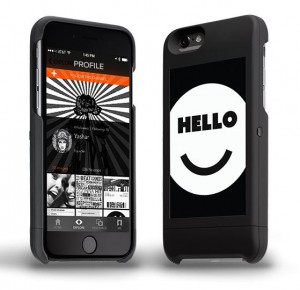Share This
Related Posts
Tags
A Smart Case
By Anca Gagiuc on May 14, 2015 in Technology
Alongside the evolving smartphone industry develops another one: accessories for these can’t-live-without devices, and particularly smartphone cases. Most of them are meant to protect the smartphone in case you drop it, other are designed with a heightened sense of fashion and put vibrant colors and intricate patterns on it, some add juice to the battery life, some add protection to the holder, while others add physical keyboards for those less attracted to the touchscreens. The possibilities seem endless.
particularly smartphone cases. Most of them are meant to protect the smartphone in case you drop it, other are designed with a heightened sense of fashion and put vibrant colors and intricate patterns on it, some add juice to the battery life, some add protection to the holder, while others add physical keyboards for those less attracted to the touchscreens. The possibilities seem endless.
Nikola Labs, an Ohio-based company, has found the way to build a case for iPhone 6 that converts RF (radio frequency) energy to DC power, in other words it pulls battery power out of thin air. Incredible? It sure sounds so, but behind this magic trick there is a scientific explanation and an issue in meeting your great expectations after reading up to this point.
According to Nikola Labs co-founder Dr. Rob Lee, over 90 percent of the smartphone’s energy is lost into the environment while spending it to forge data and voice connections by using radio frequencies. Besides protection, the case has a harvesting antenna and a RF-DC power-converting rectifier circuit that through Nikola Labs’ formula can be collected and redirected to the battery life. However, this can only add about thirty percent of battery life to your iPhone 6; this is a slow process as well. On the positive side, as long as the case is connected to the smartphone, the process of collecting and reusing the wasted energy is ongoing. This translates into a slower battery depletion and not into a sudden burst of charging process.
The case doesn’t have an internal battery or the capacity to store the energy, thus having a thinner figure than the already popular Mophie case. The company presented the fresh device on stage at TechCrunch Disrupt event.
The iPhone case will hit Kickstarter in June and could start shipping in September; it’s said to be priced at $99.
Another eye-catching smartphone case is PopSlate (pictured above), one that reminded me of the Russian YotaPhone – the two-sided Android smartphone with LCD screen on the front and E-Ink display on the back. But PopSlate is different – while the Russian phone had the system-level integration on its back side, this case is more of a passive device, independent of the smartphone.
A 4-inch e-paper display is centered on the backside of the PopSlate, and just like any e-paper display, it only knows black and white – 16 shades of grey, to be precise; it has a low resolution (240 x 400), is perfectly visible in direct sunlight and stores eight pics at a time. There is a Bluetooth chip inside that allows wireless beaming of any image from your phone. On one side of the case is a microUSB port used to charge the display (it has its own tiny battery that needs to be fed once a week) and on the other is a button that changes the image displayed on the E-Ink screen.
The case is more of a way to chase boredom away from your iPhone 6 than a practical device; however, besides personalizing the back of your smartphone as you best see fit, you can save there Google Maps snapshots or weather information, thus reducing the times you’d need to access the apps to check on those. Keep in mind that you will not be able to access links or to open any apps from the PopSlate; the device works solely as an image display.
If you wish to give endless ‘faces’ to your iPhone 6, you will have to invest $129 for the white or black PopSlate.
What would you expect from your smartphone case besides protection?
